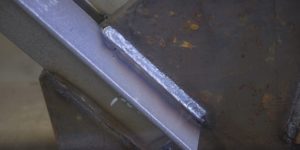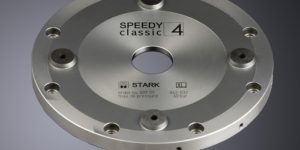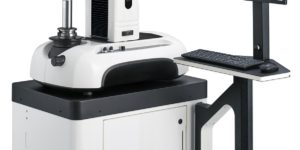Column
Filter by Process Zone:
Sales Pitches That Don’t Sell

Thoughtful salespeople and marketers are aware of the words they use with customers. Do they send the right message? Are they helpful in closing more sales? Or are they repeated endlessly without thought or meaning?
Internet of Things Automation and the Tax Breaks that Come with It

The R&D Tax Credit is one of the most valuable tax breaks for U.S. manufacturers. It rewards work done to increase the efficiency of an automated factory system or ensure that multiple systems within a facility work as one. Let’s take a closer look into this credit’s true intent and see if it applies to your automation and system integration activities.
Understanding Deoxidizers in Filler Metals

Selecting a filler metal with added deoxidizers can minimize your costs by reducing non-value-added tasks, such as pre-weld cleaning and grinding, while also providing the quality you need. Here are some insights into filler metals that offer both the performance and mechanical and chemical properties you need to gain the best results.
Make Your Mark

Whether you mark your parts for identification, ornamentation or post processing, there are several options to consider. Regardless of the purpose of the mark or the material to be marked, there is a product marking system to fulfill your needs. Here are several different ways for you to make your mark.
In-Machine Tool Measurement vs. Offline Presetting

In-machine laser technology is touted by machine tool builders and distributors as the way of the future and an indispensable tool for machinists. Do you really need an offline presetter if you have in-machine lasers? Yes, you do, and here’s why.
How to Control Laser Cutting Dust

How well are your dust collectors keeping up? If you’ve recently upgraded your laser cutting equipment or are experiencing unexplained equipment failures, now is the time to reevaluate your dust collection system. Investing in better dust control now will pay dividends in extended equipment life and better productivity for your laser cutting machines.
Turn Up the Pressure

Take a look inside a shop that has earned a reputation for high quality fabrications in stainless, high performance aluminum alloys, heat-treated Inconel and other challenging materials that withstand extreme pressures in a wide variety of industries.
How Additive Manufacturing Extends the Life of Sensors

The sensor elements used to monitor the flow in oil and gas pipelines suffer considerable wear as a result of corrosion and abrasion, which shortens their lifetimes and necessitates costly repairs. Now direct metal deposition (DMD) can be used to increase the durability of these sensors and improve the reliability of those pipelines.
Understanding AWS Classifications

As with any part of the welding operation, greater knowledge can lead to greater welding performance. Regardless of the filler metal being used for the job – stick electrode, solid wire or flux-cored wire – understanding AWS classifications can help welding operators know the performance that they will gain from a given product and the way it is best used.
How to Make Customers Feel Valued

Most businesses do a fairly good job of “pleasing” customers, but that bar isn’t nearly high enough. Far too many believe that giving them a good deal or schmoozing them is all it takes. But customers spend their money where they feel valued, not on businesses they like or where they’re treated nicely. Here are some ways to meet the major challenge of making your customers feel valued.
The Sheet Metal MES

An integrated manufacturing execution system controls and records the transformation of raw materials into finished products. In the new world of connectivity and digitization, guest columnist Juan José Colás of Lantek explains how the MES has made production management the key factor in productivity and competitiveness for sheet metal fabricators, far beyond other traditional factors, such as the use of material, calculation of times and costs, elimination of paper, and faster transfer of information.
Maintaining TCP: How Does Your Robotic MIG Gun Neck Factor In?

To maintain weld positions and weld in the same place every time, the MIG gun neck used in a robotic welding system must stay in its expected position as an accurate tool center point (TCP) that provides consistent repeatability from part to part. A weak neck that easily bends during routine welding can lead to problems with system accuracy over time. Here are some ways to protect, setup and maintain the neck and help ensure that your system maintains optimal TCP with minimal downtime.















